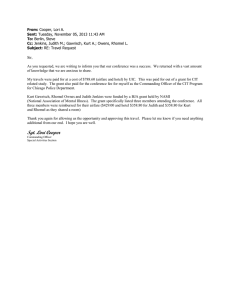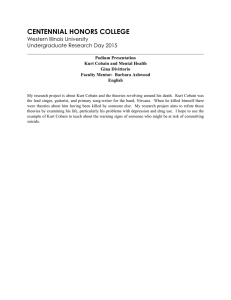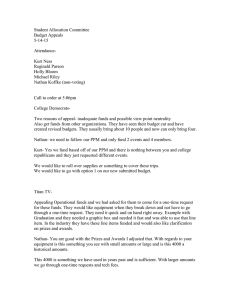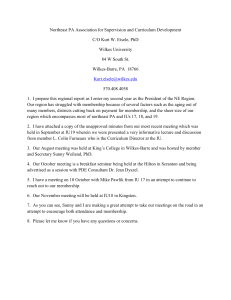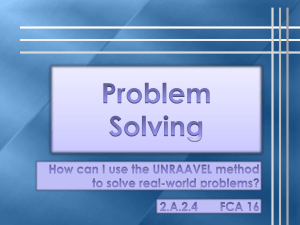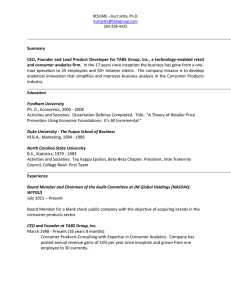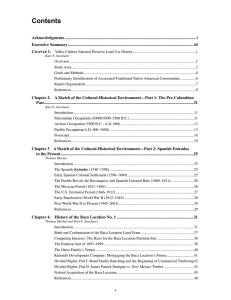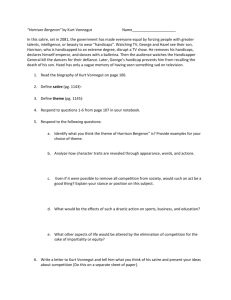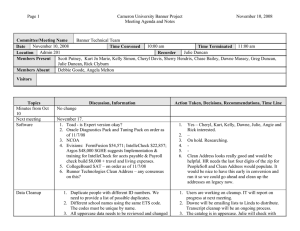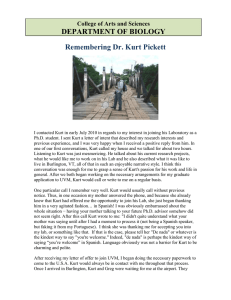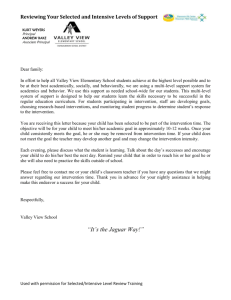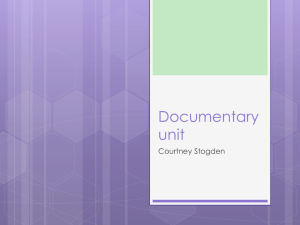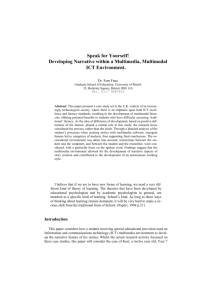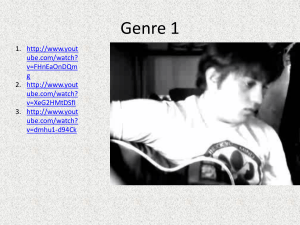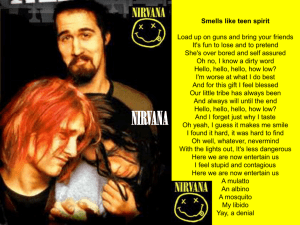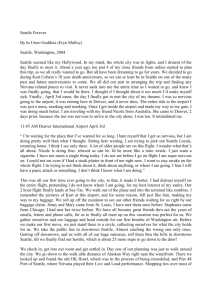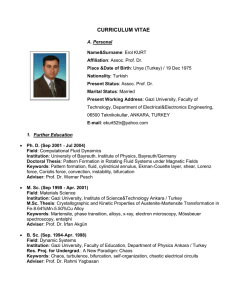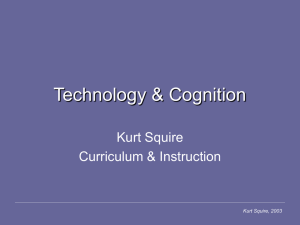Neuro Case Study
advertisement
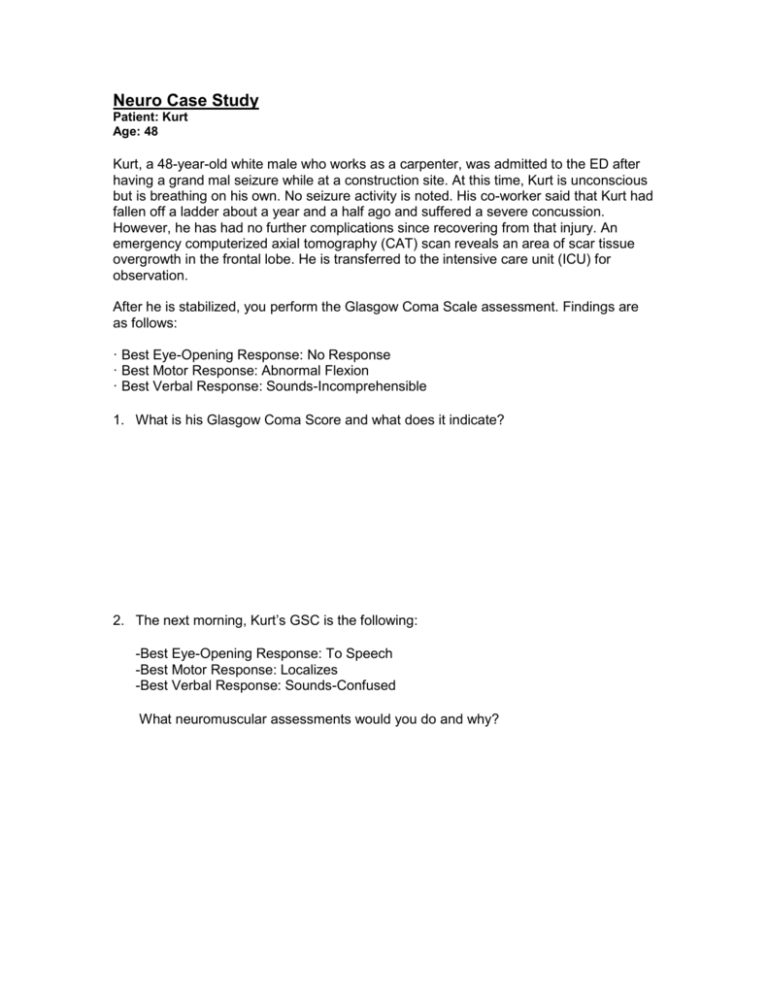
Neuro Case Study Patient: Kurt Age: 48 Kurt, a 48-year-old white male who works as a carpenter, was admitted to the ED after having a grand mal seizure while at a construction site. At this time, Kurt is unconscious but is breathing on his own. No seizure activity is noted. His co-worker said that Kurt had fallen off a ladder about a year and a half ago and suffered a severe concussion. However, he has had no further complications since recovering from that injury. An emergency computerized axial tomography (CAT) scan reveals an area of scar tissue overgrowth in the frontal lobe. He is transferred to the intensive care unit (ICU) for observation. After he is stabilized, you perform the Glasgow Coma Scale assessment. Findings are as follows: · Best Eye-Opening Response: No Response · Best Motor Response: Abnormal Flexion · Best Verbal Response: Sounds-Incomprehensible 1. What is his Glasgow Coma Score and what does it indicate? 2. The next morning, Kurt’s GSC is the following: -Best Eye-Opening Response: To Speech -Best Motor Response: Localizes -Best Verbal Response: Sounds-Confused What neuromuscular assessments would you do and why? On day 3, you assess the following: He has his eyes closed when you walk into the room but opens them when you touch his arm lightly. He seems drowsy. · Person: He is able to state his name and that he is a carpenter. · Place: He does not know where he is, but he knows that he is in a hospital somewhere in town. He names the town correctly. · Time: He states that it is Monday morning (it is Tuesday morning). He correctly states the month and year. He is able to follow verbal commands appropriately. He raises his hand when asked to do so and turns his head from the right to the left as requested. 3. How would you document his level of consciousness? 4. What specific assessments could you complete to see if there is permanent damage caused by the scar tissue (see initial data)? During your assessment, you ask Kurt to perform several activities. You have him pat his knees with both hands, palm side down, then palm side up, and then repeat this sequence quickly with rapid alternating movements. You have him touch the thumb to each finger on the same hand, starting with the index finger, and then reverse the direction. You also have him use his index finger to touch your finger (which is held out in front of him) and then to touch his nose. 5. What are each of these tests testing for and why are they important in Kurt’s case?

